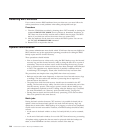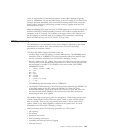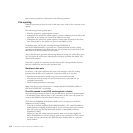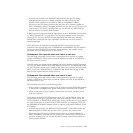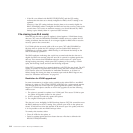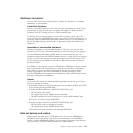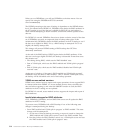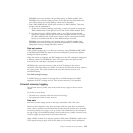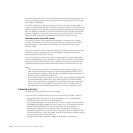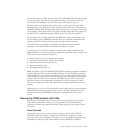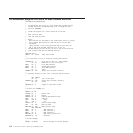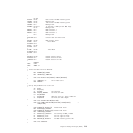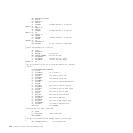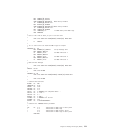each CICS allows all units of work with updates for the data set to complete, and
then they write the tie-up records to the forward recovery log and the log of logs,
and replies to DFSMSdss.
For BWO backups, it is usually not necessary for the forward recovery utility to
process a log from file-open time. Therefore, the tie-up records for all open files are
written regularly on the log during activity-keypoint processing, and the time that
they are written is recorded. To reduce the number of tie-up records if the activity
keypoint frequency is high (such as for some large systems), CICS ensures that
there is at least 30 minutes’ separation between sets of tie-ups on the log.
Recovery point (non-RLS mode)
The recovery point is a time that can be converted to a position on a forward
recovery log. Recovery of the data set requires only the records that are written
after that position. Thus all previous records can be ignored by the forward
recovery utility.
The recovery point is stored in the ICF catalog. It is initialized when the first file is
opened for update against the data set, and updated during activity-keypoint
processing and when the file is closed.
The recovery point is not the time of the current keypoint, as there might still be
some uncommitted log records that have not been forced. Instead, it is the time of
the start of the last keypoint that wrote a complete set of tie-up records and that
completed earlier than the oldest uncommitted write to a forward recovery log.
Note:
1. Only one new recovery point is calculated during an activity keypoint. It is
used for all data sets that are open for update and eligible for BWO. Thus a
long-running task updating a data set that uses BWO will affect the amount of
forward recovery needed for all data sets.
2. If you disable activity keypointing in your system (by specifying the AKPFREQ
system initialization parameter as zero), BWO support is seriously affected
because, after the file-open operation, no more tie-up records are written and
the recovery point is not updated. So, forward recovery of a BWO data set
must take place from the time that the data set was first opened for update.
Forward recovery
CICSVR fully supports BWO and the log of logs.
If you do not use CICSVR, ensure that your forward recovery utility is able to:
v Recognize whether a backup was made with BWO or not. The DFSMShsm
ARCXTRCT macro can be used to determine this.
v Use the BWO attributes and recovery point in the ICF catalog. It should use the
DFSMSdfp IGWABWO callable service to do this. See “An assembler program
that calls DFSMS callable services” on page 218 for a sample program.
v Recognize the additional tie-up records on the forward recovery logs and,
optionally, recognize tie-up records on the log of logs. These are written so that
the forward recovery utility can quickly find the correct position without having
to scan the entire forward recovery log.
v Recognize after-images that have already been applied to the data set.
216 CICS TS for z/OS 4.1: Recovery and Restart Guide



